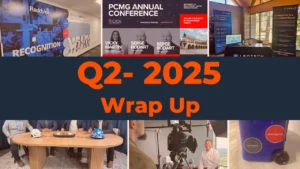Supplement or Replacement? How Robotic Technology Should Help Solve the Hospitality Labor Shortage
The COVID-19 pandemic hit the hospitality industry hard, especially in the early stages of the crisis. While leisure and business travel is back, and America’s hotels are filling up again, another problem is making it challenging to keep the industry up and running—a hospitality labor shortage.
The American Hotel & Lodging Association’s (AHLA) CEO Chip Rogers recently said that lack of available labor is the critical issue that “permeates” basically every layer of the hospitality industry; he says this for good reason. According to Travel Weekly reporting, recent AHLA survey data found that 85% of its members cited “somewhat or severe” understaffing. Reporting out of the Washington Post backs this up, citing 2 million unfilled jobs across hospitality and leisure going into February of this year.
As professionals in the industry can attest, finding available hospitality workers is no easy task. Worker demand is high, with the U.S. economy adding 517,000 jobs in January. Rogers noted the AHLA is working with Congress to increase its work visa program to infuse the industry with the much-needed labor it requires to meet demand and reduce the strain the hospitality labor shortage is putting on remaining hospitality workers.
One solution more and more hotels are turning to is robots. As various chains are citing and experts are confirming, robotic technology in front-of-house and back-of-house operations ease the labor burden and positively impacts guests. From cleaning services and frictionless transactions to room-service delivery, hotels are using robots to lessen the load on an already tightened staff.
Is this a permanent solution to the hospitality labor shortage? And as hospitality management invests in more automated solutions, will the aim be to supplement existing workers, or replace missing one? Billy Collins, head of digital strategy & sales at Punchkick, a Wipfli Digital Company, has worked with brands like Marriott to develop digital customer-facing solutions, which act as part of the larger ecosystem that robotics work within. Collins says he doesn’t see robot use in hotels as a mere stopgap but as an essential component of hospitality’s future.
Billy’s Thoughts
“When it comes to research on robots and hotels, the verdict is clear. Robots are not only here to stay, but they will become a more integral part of hotel operations well into the future. Now, some analysts pegged the hotel robot industry at just over $300 million today, which will jump to more than $3 billion by 2030.
But while most hotels have not deployed robots to roam their corridors just yet, just about every hotel has been shocked by the economy-wide labor shortages. And this is where hotel robots are making some of their first gains. Operational robots can carry on with jobs that would otherwise slide down the priority list of a hotel’s already overworked staff as they try to balance serving guests with running the business. Think vacuuming floors, cleaning bathrooms, and making deliveries. However, research also shows that the most frequently deployed robots today serve guests at the front desk. And this makes sense.
Robots can be designed with human features and emotions. They’re great at answering questions and even obtuse, nonsensical ones, and they can complete repetitive tasks. Think checking in a guest, taking a payment, and directing guests to their rooms significantly faster than humans can.
But it’s also crucial to put the physical robots aside for a minute when we think about this topic and open our definition of robots up to incorporate technologies like voice-activated in-room assistance and even chatbots on your hotel’s website. The most important thing for hotels to consider in the decision to adopt or not adopt robots is the journey their guests take when interacting with the hotel.
Now, it can be tempting to chase shiny objects. We see it every day. We see it in the news. But hotels will recognize a more significant ROI if they assess where a robot can positively impact their guest journey and deploy robots strategically to meet those guests’ needs in the moment.”









